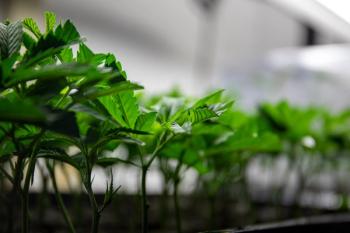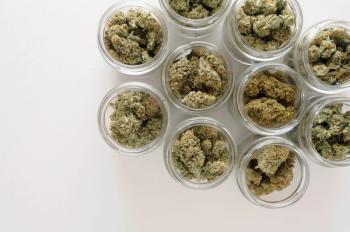
Cannabis Science and Technology
- April 2021
- Volume 4
- Issue 3
Temperature Comparison of 3M Rapid Yeast and Mold Petrifilm Utilizing Manufacturer’s Suggested Temperatures on Dried Cannabis Flower (Cannabis spp.)
In this study, dried cannabis flower found to have yeast and mold during compliance screening were randomly chosen to be plated at two different incubation temperatures to compare total amount of yeast and mold growth.
When using 3M rapid yeast and mold petrifilm for the analysis of dried cannabis flower
(Cannabis spp.), the manufacturer suggests two different incubation temperature ranges, 25 °C ± 1 °C or 28 °C ± 1 °C. In this study, dried cannabis flower found to have yeast and mold during compliance screening were randomly chosen to be plated at both temperatures to compare total amount of yeast and mold growth. These plates were incubated between 60–72 h in accordance with manufacturer guidelines for microbial testing. Overall, it was found that all plates that exhibited growth showed higher colony forming unit (CFU) counts at 25 °C and some observed to be statistically significant in their difference in favor of 25 °C. I urge all cannabis microbiologists and state compliance boards to require 3M rapid yeast and mold petrifilm, when testing dried cannabis flower, to be incubated at 25 °C to ensure accuracy in testing and safety of the consumers.
There is such a diversity of microorganisms on dried cannabis flower (Cannabis spp.) that it has led us to selectively test for the ones harmful to humans. These guidelines are a pass–fail system that are regulated on a state-to-state basis, and can be set up as either a colony forming unit (CFU) threshold or through presence and absence testing (1). One area of concern for cannabis has been yeast and mold contamination of the flower through the growing and drying process. Several different types of yeast and mold have been found to find a suitable environment in cannabis production conditions through a speciation process (2). Cultivators have also now started adding different microorganisms, including fungi, to help facilitate the growth of their product in a way to be more natural in their growing situations (3). The problem stems from that some of the microorganisms, in large enough quantities, can lead to human harm if not properly tested for (1).
The overall purpose of this study is to compare CFU counts at two different manufacturer recommended temperatures to determine the optimum temperature for measuring yeast and mold on dried cannabis flower. Dried cannabis flower is defined as the crude flowering part of the cannabis plant (4). This is generally the main part of the cannabis plant that is tested. The manufacturer of petrifilm, 3M, recommends two different temperatures for the incubation period of their rapid yeast and mold product Cat: 6475/7477. These temperatures are 28 °C ±1 °C or 25 °C ± 1 °C. After reaching out to 3M their response stated that there were two different ranges because some yeast and mold organisms are better recovered at 25 °C while others grew better at 28 °C. Following this inquiry, the question was asked is there a difference between 28 °C ±1 °C or 25°C ± 1 °C for incubation temperature? Secondly, if there is a difference in temperature, which of the two temperatures would be the optimal temperature for dried cannabis flower?
Experimental
Five client samples that were found to have a total yeast and mold count under full panel compliance testing were chosen at random to be used in this temperature comparison. These samples were crushed to form a homogeneous cannabis mix in a sterile bag and transferred to the weighing area. Next, 1 g from each sample was weighed out aseptically into a sterile filtered bag to which 99 mL of sterile butterfield’s diluent was added. Following that, 1 mL of this solution was transferred to petrifilm and pressed. This process was repeated 50 times on to 3M rapid yeast and mold petrifilm for each of the five samples. This was done in accordance with the instructions given by the manufacturer and Association of Official Agricultural Chemists (AOAC) recommendations (2,4,5). Petrifilm is a simple, ready to use plate system with specialized antibiotics to facilitate the growth of only yeast and mold on the plate in a rapid manner (5). These 50 replicates were then equally divided randomly to either be incubated at 28 °C ±1 °C or 25 °C ±1 °C. Following the state of Nevada and 3M guidelines for incubation, these plates were incubated between 60–72 h along with a blank and a laboratory control spike (LCS). This LCS was made from a pure culture of Candida albicans (NCPF 3179/ATCC10231) to confirm fungi growth can occur under present conditions. The blank was plated to confirm that no cross-over contamination occurred throughout the process. Due to client confidentiality, the names of the clients will be hidden and will be given a four-digit number to associate the sample with. These numbers are as follows: 5205, 5124, 5251, 5308, and 5166.
Results
CFU Count Comparison
Samples 5124 and 5251 CFU counts were found to be significantly different at the 95% confidence interval (Table I). Samples 5308, 5166, and 5202 were found to be nonsignificant even though the average CFU count was higher at the lower temperature (Figure 1). To determine whether a significant difference between samples existed, a two-sample t-test with df=48 was conducted, with alpha set at the 0.05 level. In all four samples that experienced growth, all difference of means were negative again showing that high counts were observed at the lower temperature recommendation. Sample 5308 showed no growth at the dilution. From this data we can deduce that the lower incubation temperature is likely more ideal for yeast and molds commonly found on dried cannabis.
Conclusion
When testing dried cannabis flower for total yeast and mold, utilizing 3M yeast and mold rapid petrifilm, 25 °C offers statistically higher counts in comparison to 28 °C. Sample 5251 and 5124 showed significant difference between temperatures at the 95% confidence interval (Table I). All samples that showed growth yielded higher counts at the lower temperature (Figure 1). Along with higher counts, colonies are easier to enumerate because of the increase in morphological diversity observed on the plates. These morphological differences mainly pertain to the shade of color of the colonies found on the plate. The remaining sample that showed no growth was determined to be plated at a dilution too high to see the true CFU count. Secondly, samples were in refrigerated storage prior to research and development for more than 30 days due to state guidelines of sample disposal. This could have also played into the lack of growth for sample 5308.
This preliminary research has areas of possible expansion in many ways. For one a selective agar, such as Dichloran Rose-Bengal Chloramphenicol agar (DRBC), could be used to compare the counts of different temperatures to a single count. Secondly, temperatures outside of manufacturers specifications could be implemented because of the complex matrix of the dried cannabis flower. This matrix specifically on 3M rapid yeast and mold petrifilm can lead to misidentification to the untrained eye due to the cannabis matrix causing a blue color to appear, but these small matrix interferences do not match the morphology of other yeast and mold (6). With continuing innovations in temperature, media, and measurement of contaminate we can hope to minimize the effect of matrix interference in the sample measurement. Ultimately, the goal is to not only supply cultivations and manufacturers of cannabis with honest and accurate results so that they can better remediate their product, but to also not allow harmful product to reach the marketplace. In late 2020, the AOAC developed a task force to evaluate yeast and mold determination in cannabis, but as microbiologists in this new industry we are responsible for validating these methods to protect the consumers of the marketplace (7). Based on these preliminary results we have identified 25 °C to achieve the most reliable growth for rapid yeast and mold petri. I urge governing bodies of cannabis and method developers to require that laboratories that utilize the 3M rapid yeast and mold petrifilm to incubate at 25 °C or to research how these temperatures may affect growth in different states. This will maximize the potential for CFU growth for samples and limit the possible health concern of allowing contaminated product to enter the marketplace.
Acknowledgements
I would personally like to thank RSR Analytical Laboratories for help fund this research, Tao Zhong for aid in sample preparation, and Wyatt J. Tarter for statistical analysis.
References
- R. Upton, L. Craker, M. ElSohly, A. Romm, E. Russo, and M. Sexton, Cannabis Inflorescence: Cannabis spp.: Standards of Identity, Analysis, and Quality Control (American Herbal Pharmacopoeia, Scotts Valley, California, 2014).
- A.K. Gautam, M. Kant, and Y. Thakur, Archives of Phytopathology and Plant Protection 46(6), 627–635 (2013).
- Z.K. Punja, D. Collyer, C. Scott, S. Lung, J. Holmes, and D. Sutton, Frontiers in Plant Science 10, doi:10.3389/fpls.2019.01120 (2019).
- 3M Petrifilm Rapid Yeast and Mold Count Plate Interpretation Guide. 3M,
https://multimedia.3m.com/mws/media/902046O/3m-petrifilm-rapid-ym-countplate-interpretation-guide.pdf. Accessed 2 February 2021 . - P. Bird, J. Flannery, E. Crowley, J. Agin, D. Goins, and R. Jechorek, Journal of AOAC INTERNATIONAL 98(3), 767–783 (2015).
- N. Stolze, C. Bader, C. Henning, J. Mastin, A.E. Holmes, and A.L. Sutlief, Journal of Microbiological Methods 164, 105681 doi:10.1016/j.mimet.2019.105681 (2019).
- AOAC international Activates accelerated program to evaluate test kits that measure yeast and mold in cannabis. (2020, December 07). Retrieved March 13, 2021, from
https://www.aoac.org/news/aoac-international-activates-accelerated-program-to-evaluate-test-kits-that-measure-yeast-and-mold-in-cannabis .
About the Author
ANTHONY J. REPAY, M.S., is the Director of Microbiology at RSR Analytical Laboratories. Direct correspondence to:
How to Cite this Article
A. Repay, Cannabis Science and Technology 4(3), 32-34 (2021).
Articles in this issue
over 4 years ago
Why Dispensaries Need In-House Testingover 4 years ago
The Evolution of Ethanol Extraction Methods in Cannabisover 4 years ago
Gaining Deep Knowledge About Cannabis Cultivation: How and WhyNewsletter
Unlock the latest breakthroughs in cannabis science—subscribe now to get expert insights, research, and industry updates delivered to your inbox.




